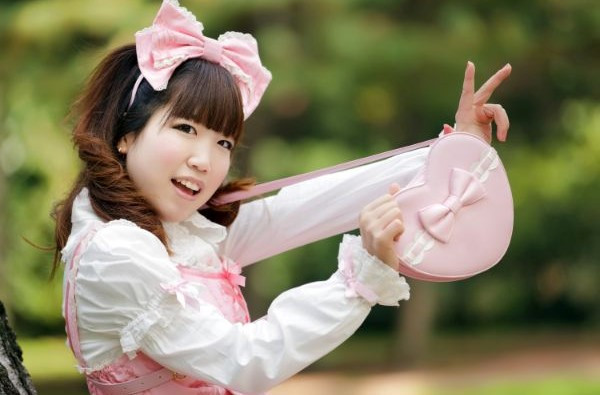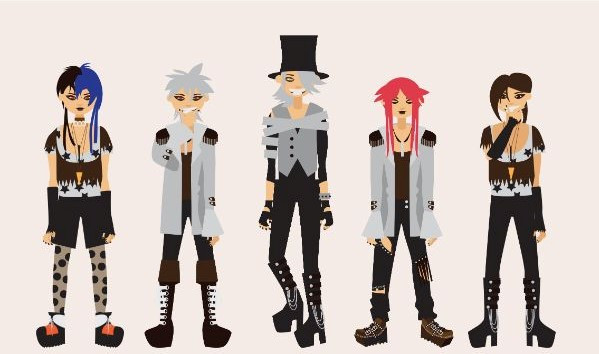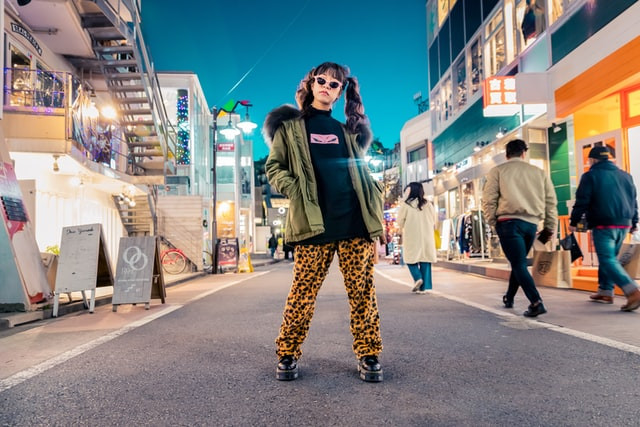First thing that comes to mind about Harajuku is the eccentric yet fascinating fashion styles, of which there are many, plus the busy shopping street that is Takeshita-dori, the delicious food like crepes and tornado ‘tatoes. We’ve covered Takeshita extensively, so this time we’ll focus on Harajuku fashion and shopping.
Table of Contents
- Development of Harajuku Fashion
- Getting to Know Harajuku Fashion Styles
- Where to Shop in Harajuku
- Summary
Development of Harajuku Fashion
Origins of Harajuku Fashion can be traced back to the 1960s in the Tokyo district of Harajuku. At that time up till the 1970s, the Harajuku area was a hubbub of shops opened by fashion designers that lived in the area. Not to mention being the post-war period, there were quite a few American and European shops catering to Westerners. The clash of cultures probably contributed to the start and development of Harajuku Fashion that kicked off in the 1990s.
The Harajuku area, particularly around Harajuku Station, became the hangout spot for young people. Streets, including back alleys, became filled with countless boutiques and the like. Bands and dance groups of all kinds would gather during the weekends for live performances livening up the place. The gathering of these various subcultures gave birth to even more unique fashion trends like lolita, visual kei, punk rock and the like.
To this day, Harajuku still retains its individualistic style. Just strolling down Takeshita-dori, you’ll catch a glimpse of people expressing themselves the only way you can there, in pure Harajuku-style.
Writer's Pick
Getting to Know Harajuku Fashion Styles
Harajuku Fashion is not one distinct style; it is made up of many fashion styles and subcultures. Not just that, they are fluid in the sense of ever-developing and changing, with new styles appearing and old styles transforming. Here are some of the styles:
1. Lolita
Lolita is one of the most popular Harajuku styles. Just exploring Harajuku, you’re bound to bump into a few people donned in full Lolita.

What is lolita fashion?
Lolita fashion is heavily influenced by Victorian style clothing. Its distinct characteristics include frills, lace, petticoat for a poofed-up skirt, headpieces, and fashion gloves.
In the earlier days, lolita can be easily distinguished into three categories of:
Classic
Classic style is more true to historical Victorian fashion. It exudes a lady’s elegance and maturity. Compared to the other styles, it can be described as more “normal” with solid colors, simple patterns, and minimal accessories - but it still stands out as it’s a full-on Victorian-style dress most of the time.
Gothic

Darkness is the theme of gothic lolita. Gothic lolita outfits are always in dark colours like black or navy. Accent colours are usually maroon, dark shades of red, blue, purple, and white (increasing in frequency). Popular gothic-themed accessories include roses, rosaries, Mary Jane / platform shoes, and black lace cuffs/chokers.
Sweet

As its name implies, sweet lolita is all about looking sweet. Light colours are frequently used, though there is the occasional bright cheery tone. Patterns are cutesy featuring teddy bears, animals, food, flowers, storybooks and fantasy creatures like unicorns, stars, and etc. Popular accessories are ribbons and bows.
Aside from these earliest categories, there are many other subcultures of lolita that have appeared as time passed. Some of them are:

-
Steampunk: A Victorian sci-fi look featuring lots of browns, leather, brass/copper accessories, boots, and corsets. Motifs include clocks and cogs.
-
Wa: Japanese-style lolita featuring kimono or yukata style lolita dresses. Typically, dresses are knee-length with the top half being kimono/yukata style with an obi and large sleeves, whilst the bottom half retains the Western poofy skirt.
-
Qi: Similar to Wa but this time Chinese-style featuring cheongsam (also known as qipao) or hanfu.
-
Sailor: Sailor-style is heavily inspired by sailor uniforms. Dresses usually have quite simple designs with solid colours and simple accent patterns. The sailor collar (and ribbon) is essential to complete the look.
-
Pirate: Self-explanatory. The most famous brand for pirate lolita is Alice and the Pirates.
2. Kawaii
Kawaii (可愛い or かわいい) in Japan means cute. This style may be similar to Sweet Lolita in terms of both being lovely and sweet but that’s where the similarities end. Kawaii clothing can be regular clothing just as long as it's cute. Cat-eared hoodies & parkas, non-lolita lovely pink lace dresses, rainbow sweaters, unicorn print blouses, sparkly jeans, teddy bear handbags - anything goes as long as it’s lovely and cute.
3. Decora
Decora is the shortened word of the Japanese transliteration of Decoration. Decora is kind of a dying trend but sometimes (though rarely) you can still spot someone in Harajuku. The most identifying characteristic of decora is the sheer number of accessories like ribbons, bracelets, necklaces, hairpins, and even plush toys. It is not to be mistaken with deco-loli, a subculture combining decora and lolita, as it lacks the lolita fundamentals.
4. Visual Kei

Visual Kei is usually associated with Japanese punk rock or even metal bands particularly in the 1980s. Well-known visual kei bands include X Japan, The Gazette, L'Arc-en-Ciel, and Glay. If you know them, you can probably picture how they look and dress and that’s the inspiration behind Visual Kei styles.
5. Fairy Kei
Fairy Kei is often mistaken for sweet lolita, kawaii and decora styles due to their similar colour tones and cuteness. It features pastel colours, 80s cartoons and plenty of fantasy themes. It is a lot more casual than sweet lolita, a lot more toned down than decora but more toned up than kawaii making it a unique style of its own.
6. Gyaru

Gyaru technically means “gal” but that word doesn’t adequately describe this unique fashion style so we’ll stick to Gyaru. A typical image of Gyaru is a very tanned girl with bleached blonde hair, heavy makeup, and heavily decorated nails. This may have been true up till the 2000s but since then this old-Gyaru style has greatly declined; in fact seeing one may be more difficult than you think.
The present day Gyaru goes by a much more toned-down style called Neo Gyaru. The style depicts light-coloured hair, slightly (more natural looking) tanned skin (for some people), and flashy clothing. Gyaru are also much more identified by how they speak, not just their looks and clothing.
7. Punk Rock

Often mistaken as Visual Kei, punk rock is characterized by biker leather jackets, ripped jeans, leather boots (platformed ones too), and punky accessories like chokers (also spikey ones), chains, straps, and piercings (both male and female). Dark red is a favourite accent colour especially for girls with checkered skirts.
Where to Shop in Harajuku

Shopping in Harajuku is best experienced along Takeshita-dori, the heart and centre of Harajuku. The street is lined with various fashion boutiques and eateries. For things to do aside from shopping, check out our dedicated article:
Harajuku’s Takeshita Street: An Unforgettable Experience
Recommended Shops in Harajuku
For Accessories
-
390 Thank You Mart along Takeshita-dori; all items are 390 yen
-
6% Doki Doki, behind Tokyu Plaza Omotesando Harajuku; carries lots of Kawaii and Decora stuff and also has selection of clothing
For Fashion
-
LaForet, a shopping complex with some Harajuku fashion themed shops
-
WeGo, cheap affordable clothing
-
Kinji, second-hand clothing shop
-
SoLaDo along Takeshita-dori; emphasizes kawaii clothing
-
Boutique Takenoko along Takeshita-dori has a huge selection of cosplay and stage costumes
-
Sakazen along Takeshita-dori has everything from shoes to bags, t-shirts and hoodies, caps and ripped jeans, and last but not least designer brands
For Lolita
-
LaForet B1.5, best place with gathering of Lolita boutiques on one floor
-
Milk, near Meiji-Jingumae Station
-
Bodyline, lolita and cosplay outfits as well. A good place for lolita beginner’s as prices are cheap, and also sells shoes and wigs. Don’t expect great quality.
Summary

From the 1960s to now, Harajuku continues to dazzle the world with its unique Harajuku Fashion styles. Just strolling down the street window shopping whilst enjoying street foods is great fun in itself, and if you spot someone wearing a creative outfit, try your best not to stand and stare! Join in on the fun yourself by wearing something that expresses your creativity and adds to the charm of Harajuku. Who knows? You might start a trend yourself!











.jpg)





















